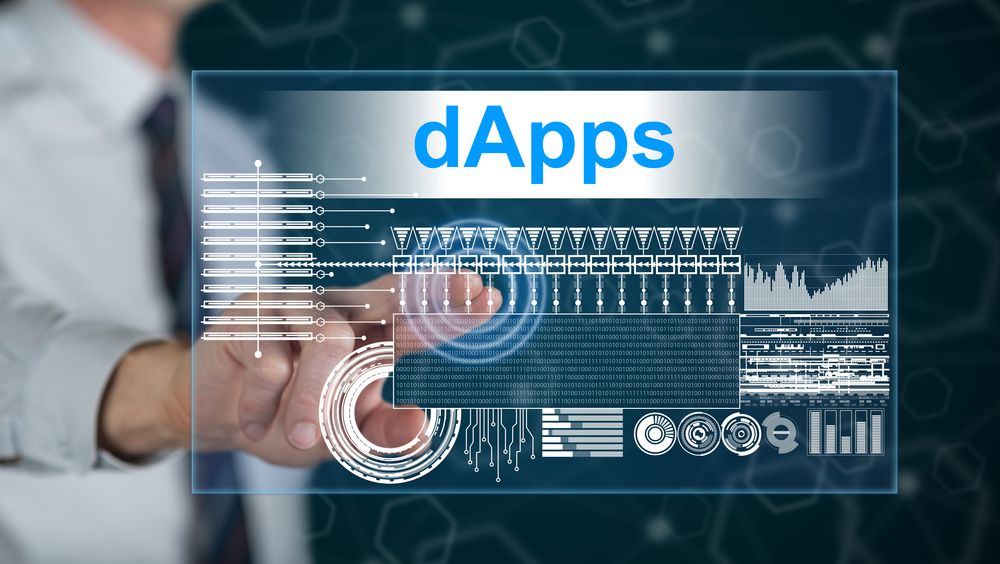On the Grapevine: Is Block.One Joining the LiquidApps DSP Network?
LiquidApps launched its DAPP Network at the end of February, with its stated mission “to promote the mass scale adoption of decentralized applications.” Despite being only a few weeks old, there’s already a good deal of excitement around the launch and what it means for the future of dapps on the EOS blockchain.
Within the Reddit EOS community, there’s even some speculation that Block.One, the development company behind EOS may become a dapp service provider (DSP) on the LiquidApps network.

Given that Block.One is one of the biggest EOS whales, holding ten percent of all tokens, then that would be a pretty big deal if it happens.
So, what is it about LiquidApps that’s drawing in so much curiosity from the community? The answer to that lies in the current challenges facing dapp developers on EOS.
Developer Challenges with EOS
EOS launched last year, after completing one of the biggest ever token sales which raised $4 billion. Prior to the launch, it had come under criticism from some parts of the cryptosphere after having run a year-long ICO based only on a white paper and with no working product. Despite these misgivings, the EOS team have delivered on their initial promise.
The network is handling 50,000 transactions per second, far faster than current speeds on Ethereum. EOS also consistently ranks among the top five cryptocurrencies. However, there are challenges for developers using EOS. Whereas users of Ethereum dapps bear the network transaction costs in the form of gas payments, on EOS it’s up to developers to secure the necessary network resources prior to deploying their dapp.
For an EOS developer, this means paying up front for three system resources – state storage on the blockchain (which EOS calls RAM), average consumption of computing power measured in time spent (CPU), and network bandwidth (NET). The cost of these resources, particularly RAM, is proving to be a barrier for some developers, with Coindesk highlighting the risk that these costs will ultimately pass over to end users.
LiquidApps Solution – vRAM on the DAPP Network
The reason some parts of the crypto community are speculating about the future of LiquidApps is that it’s just launched a solution that makes RAM more affordable for EOS developers. The first use of LiquidApps DAPP Network and the native DAPP utility token is the vRAM system.
Using vRAM provides affordable access to potentially unlimited storage, alongside off-chain processing with the integrity of on-chain transactions. vRAM is compatible with EOS RAM, and effectively removes the correlation between the cost of RAM and the size of smart contracts.
If successful, it will work to attract developers to EOS over other blockchain networks. As the LiquidApps name implies, the network aims to bring liquidity to DAPPs in the same way that market makers bring liquidity to crypto exchanges.

Role of the DSP
The vRAM network consists of nodes which are operated by dapp service providers (DSPs). Any individual or entity can become a DSP, providing they meet the minimum requirements for running a node on EOS.
Once their node is up and running, the DSP can create customized packages for developers. These packages include the amount of RAM storage space available for use, the server specifications and the corresponding amount of DAPP utility tokens that must be staked in order to use each package.

According to the EverythingEOS podcast, LiquidApps has already confirmed Airdropsdac and EOS Infra as DSP partners. However, the aforementioned Reddit thread puts forth the intriguing idea that Block.One could be a potent addition to the DSP network. The company holds 90 million EOS tokens, which could inject significant liquidity into the DAPP Network if the rumors turn out to be true.
Whipping up yet more speculation, Dan Larimer, the CTO of Block.One and the developer of EOS, recently broke his prolonged Telegram silence. In the dedicated EOS Telegram channel, he made the lone, enigmatic statement that “Good things are coming”.

Since then, he’s also confirmed that a full roadmap is soon to follow.
Given that the goal of LiquidApps is to promote the mainstream adoption of dapps, then Block.One certainly stands to benefit if the company achieves its vision. However, at this moment, neither LiquidApps or Block.One have confirmed any collaboration.
Looking Forward
Block.One rumors notwithstanding, LiquidApps hasn’t been shy about confirming its plans for future development. Alongside vRAM, the DAPP Network also currently offers another product called Zeus, a dapp software development kit (SDK). This enables dapp development while ensuring that developers can benefit from the other utilities available on the DAPP Network.
While the DAPP Network currently operates only on the EOS platform, LiquidApps aims to launch similar functionality to help DAPP adoption on other blockchains in the future. The company foresees that the DAPP Network can expand to accommodate a whole range of utilities for the DAPP token. These include the potential for P2P lending of tokens, RAM-less accounts, and inter-blockchain communication.
Whether or not Block.One end up joining forces with LiquidApps remains to be seen. However, the crypto community is always on standby for any clues, no matter how enigmatic they may seem.

